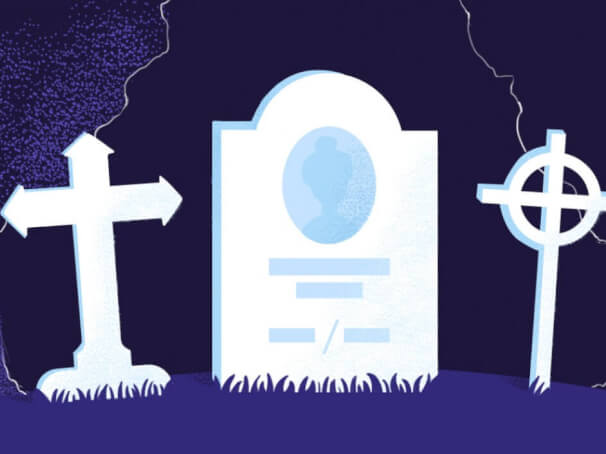
Agoraphobia is a profoundly complicated anxiety disorder. It's a disorder that is also difficult to explain and is often caused by other anxiety disorders in several ways.
Agoraphobia is often misunderstood, as its definition can change depending on how someone is reacting to the environment around them. It may be defined as:
- Fear of being out in the open or in public.
- Fear of being in an area without an easy escape.
- Fear of being in unfamiliar places.
- Fear of leaving home.
Some people with agoraphobia struggle to go out in places like public parks. Others can only commute to familiar places, like home and work. Still, others struggle considerably to even leave their home at all. The first and second definition are the two most common definitions, but the latter two have been accepted as other consequences of agoraphobia.
Understanding Agoraphobia
Do you get severely nervous when you leave your home? Are you fearful of large crowds? Do you often look for a way to escape any time you're in an unfamiliar area? Does the very idea of leaving your home cause you to feel nervous, and worried that you may not be able to maintain control?
Agoraphobia is a fear that has a drastic impact on quality of life. It makes it nearly impossible to venture out and meet others. It makes it hard to enjoy new activities, and even harder to maintain your mental and physical health.
Agoraphobia is not the same as social phobia. With agoraphobia, it's the feeling that you can't escape or that something dangerous will happen. With social phobia, the fear is of the social situations themselves. Social phobia may be a contributor to agoraphobia in some people, but it's not the same disorder.
Symptoms of Agoraphobia
Agoraphobia is itself a symptom, because those living with agoraphobia often spend all of their time in their own home, or in places that are comfortable. But agoraphobia may also cause symptoms of an anxiety attack, especially if the person either has to go outside or thinks about the idea of being in an area that doesn't have an immediate exit. Agoraphobia symptoms include:
- Rapid heartbeat.
- Feeling of helplessness/need to escape.
- Sweating, possibly with hot/cold sensations.
- Upset stomach.
- Nausea.
- Shortness of breath and lightheadedness.
- Hyperventilation.
- Dizziness.
- Severe trembling, especially when in an uncomfortable situation.
Agoraphobia often triggers an anxiety attack when the person is in an uncomfortable situation. Those with agoraphobia may feel fine when they're home and "safe," but some continue to experience anxiety even in the home environment.
Causes of Agoraphobia
Phobias are, by their very nature, an "irrational fear" in that the fear may be strong for reasons that are not always clear. That means that it's possible to develop agoraphobia without any easily identifiable cause, simply because you have developed a fear of open spaces through your genetics and upbringing.
But agoraphobia often has a cause that can show a direct link to the development of the condition, and the most common causes of agoraphobia are other anxiety disorders. These include:
- Panic Disorder
- Post-traumatic Stress Disorder
- Social Phobia
- Other Phobias
Of those four causes, panic disorder is by far the most common reason for the development of agoraphobia, the reasons for which will be explained momentarily. Still, it's not necessarily the only cause. Other anxiety disorders may also lead to agoraphobia in their own way.
Post-traumatic stress disorder (PTSD) may contribute to agoraphobia, because it can develop after a major trauma. Many people experience a fear that their trauma will happen again, and use their own home as a safe house to avoid any chance of danger.
Social phobia may also create agoraphobia, even though the two are not the same condition. In fact, many of those with agoraphobia have excellent social skills, but the fear of unfamiliar areas makes it hard for them to use those skills. Still, social phobia can contribute to agoraphobia if those with social phobia start to fear social situations too strongly.
Finally, other phobias can, in theory, lead to agoraphobia. Some people's phobias become incredibly overwhelming, to the point where they avoid going to an unfamiliar place so that there is no chance they can encounter their phobia. For example, a person may never spend any time outdoors because of a fear of spiders.
Still, the most common cause of agoraphobia is panic disorder, which is why a panic disorder diagnosis often comes with a tag of "with" or "without" agoraphobia.
Panic Attacks With Agoraphobia
Easily the most common cause of agoraphobia is panic disorder. Panic disorder with agoraphobia is quite common and affects many of those that suffer from panic attacks.
There are two issues that lead to agoraphobia in those with panic attacks.
The first is simply a fear of shame or embarrassment or the feeling that they can't get any help if they have a panic attack. Panic attacks are legitimately frightening events, and many people develop a fear of breaking down in front of others and feeling helpless without any way to find relief.
This is a common issue that contributes to agoraphobia. Yet it's often not the only cause. Agoraphobia may also be caused by a type of behavioral conditioning that occurs when people suffer from panic attacks. Often it follows this type of pattern.
- You experience a panic attack in some location, like a mall or restaurant.
- You go back to that mall or restaurant, and get a panic attack again.
- You associate that place with panic attacks, and avoid it in order to get them less.
- You find that this works for a while, but eventually you get a panic attack somewhere else.
- You decide to avoid that place too.
- You find the cycle continues until you start to associate most places with panic attacks.
- You become afraid to leave the house in order to avoid panic attacks.
What many people find is that this cycle is also self-sustaining. Fear of a panic attack can cause a panic attack, so any time you go outside worried about having a panic attack you're more likely to have one and the fear is reinforced again.
It may not be specific locations either. You may find that you get a panic attack when you're in a car going long distances, so you start to avoid long drives. Or you may find that you get panic attacks when you're in large groups so you start to avoid groups. All of these can cause you to slowly reduce the things you're able to do, until you eventually become agoraphobic.
Not everyone with panic attacks becomes agoraphobic, and it's not clear why some of those with panic disorder have agoraphobia while others do not. If you have panic attacks, you can avoid agoraphobia by facing your fears and avoiding the belief that your panic attacks come from being outside. No amount of avoidance can stop panic attacks. You need to treat your panic attacks directly in order to prevent agoraphobia.
Treatment for Agoraphobia
Treatment types depend, in large part, on what is causing agoraphobia and whether or not you have agoraphobia with or without panic attacks.
- Without Panic Disorder
Often agoraphobia is treated with its own specific cognitive behavioral therapy treatments, especially exposure therapy. Exposure therapy involves helping the individual get used to the idea of going outside through a series of steps that help them become more relaxed in public situations. Medications may also be used to manage anxiety, under the assumption that the individual will spend more time outside and reduce their fear of unfamiliar situations. Medications are generally a last resort, however.
- With Panic Disorder
Similar treatments may be used when someone has panic disorder, but they need to be combined with panic attack treatments. Exposure therapy for panic attacks may be a good place to start, because it allows people to get used to each individual panic attack trigger ultimately reducing the likelihood that a sensation will cause a panic attack.
Medications can be used as well, although it is often best to combine medications with non-medicinal treatment. Recall that panic attacks can be triggered by fear of a panic attack. While medications may provide temporary relief, as soon as you wean off the medications you'll fear having a panic attack again, and a panic attack will become more likely.
In all cases of agoraphobia, treatment cannot begin until your anxiety is better understood.











